Warning: Undefined variable $k in /home/nginx/domains/wired2fishcom.bigscoots-staging.com/public/wp-content/themes/understrap-child-0.6.0/functions.php on line 984
Warning: Undefined variable $k in /home/nginx/domains/wired2fishcom.bigscoots-staging.com/public/wp-content/themes/understrap-child-0.6.0/functions.php on line 987
Fishing has been a way of life for many over the centuries, and is a favorite pastime of many more now. From this age-old pursuit, several different types of fishing reels have emerged. Some are used for targeting small fish with small baits, others for hauling in the biggest gamefish imaginable, and still others suited for their spot on the spectrum in between.
Different Kinds of Fishing Reels
Today, we’re going to look at five different types of fishing reels and talk briefly about their design features and intended use.
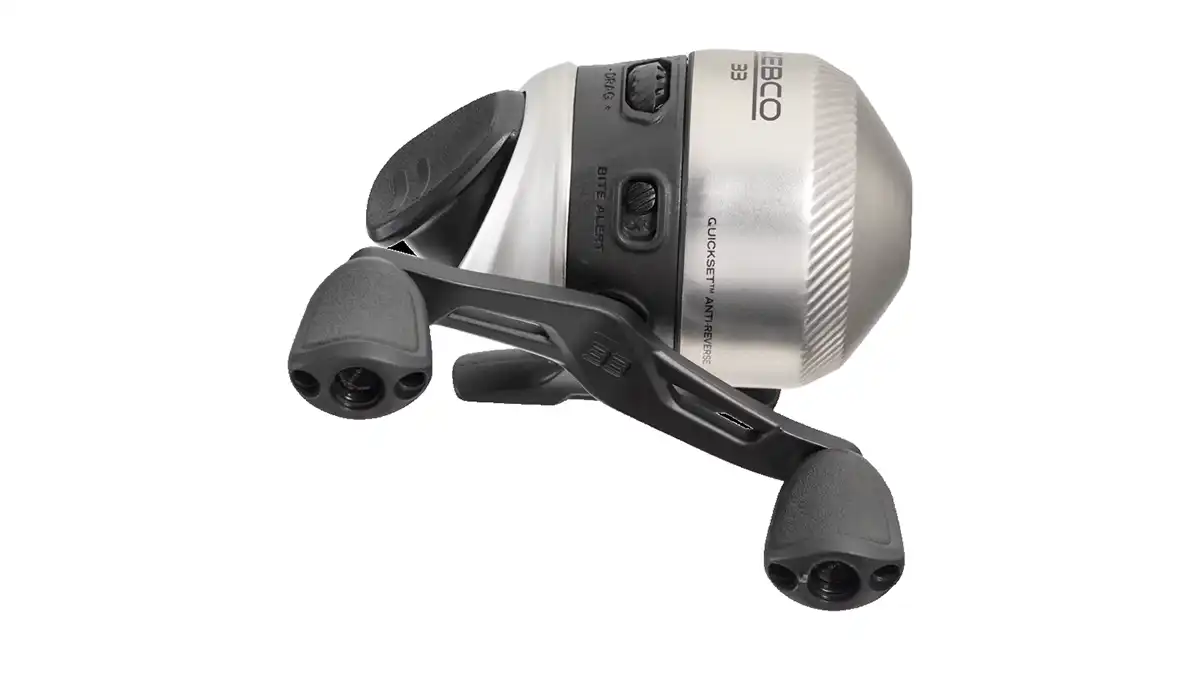
SPINCAST REEL
Let’s start with the easiest reel for any angler to fish with: the spincast. This type of reel is known to many as a Zebco, since the company was and—is to this day— a frontrunner in this market space. The Zebco 33 is the iconic spincast reel for the ages. These reels are, in a way, a mix between two of the other more popular reels we’ll look at in a moment: spinning and baitcast.
The handle on this reel functions like that of a baitcast reel, while the spool has the orientation of a spinning reel. The difference with the spincast though is that the spool is concealed inside of a housing, with only a small hole for the line to exit through.
This is a great reel for beginners, but most models can only accommodate a small diameter line size. The accuracy is limited as well. These reels are typically used for targeting small panfish in creeks and ponds. But this is definitely the most affordable and best reel to start a young angler off fishing with.
To cast a spincast, reel up your bait until it’s about a foot from your rod tip, push the line release button on the bottom of the reel with your thumb and hold it down while bringing the bait and rod tip behind your head. Then, in one quick motion, bring your rod tip in front of you while simultaneously releasing the button and your bait should sail towards its target.
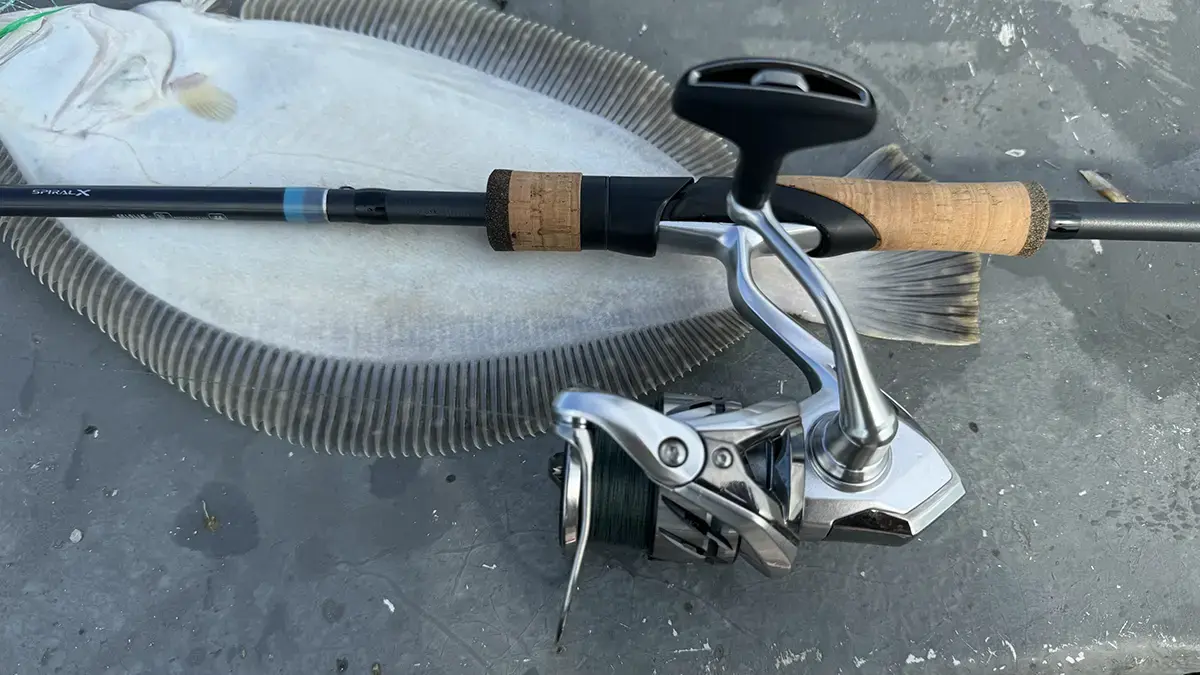
SPINNING REEL
Spinning reels are the most versatile of all types of fishing reels. From ultralights used for ice fishing and panfishing to massive reels for offshore saltwater fishing, spinning reels all have a few things in common.
For starters, these reels are mounted below the rod, as opposed to on top of the rod like most other reels. The spool has a horizontal orientation, with a drag adjustment on the top of the spool. Then there’s a bail, which releases the line on the cast and contains it on the retrieve.
These reels are great for finesse presentations in freshwater, whether targeting panfish or when targeting bigger bass with smaller baits. Finesse tackle is easier to use with spinning gear than it is with baitcast gear, and you can still maintain a larger line size than you can with a spincast.
There are a few drawbacks. Line twists develop more when using spinning reels, and this can lead to lots of tangles. But, backlashes with baitcasters (as we’ll discuss in a moment) are still more prevalent and harder to deal with. So, spinning gear is an excellent choice for beginner to intermediate anglers. These reels also serve specific purposes for even the most advanced bass fishermen.
Brands like Shimano and Daiwa lead the pack in spinning reels but other great makers like Abu Garcia, Pflueger, Lew’s and others make solid offerings in all price ranges. The reel in the featured image is the Shimano Stradic FM.
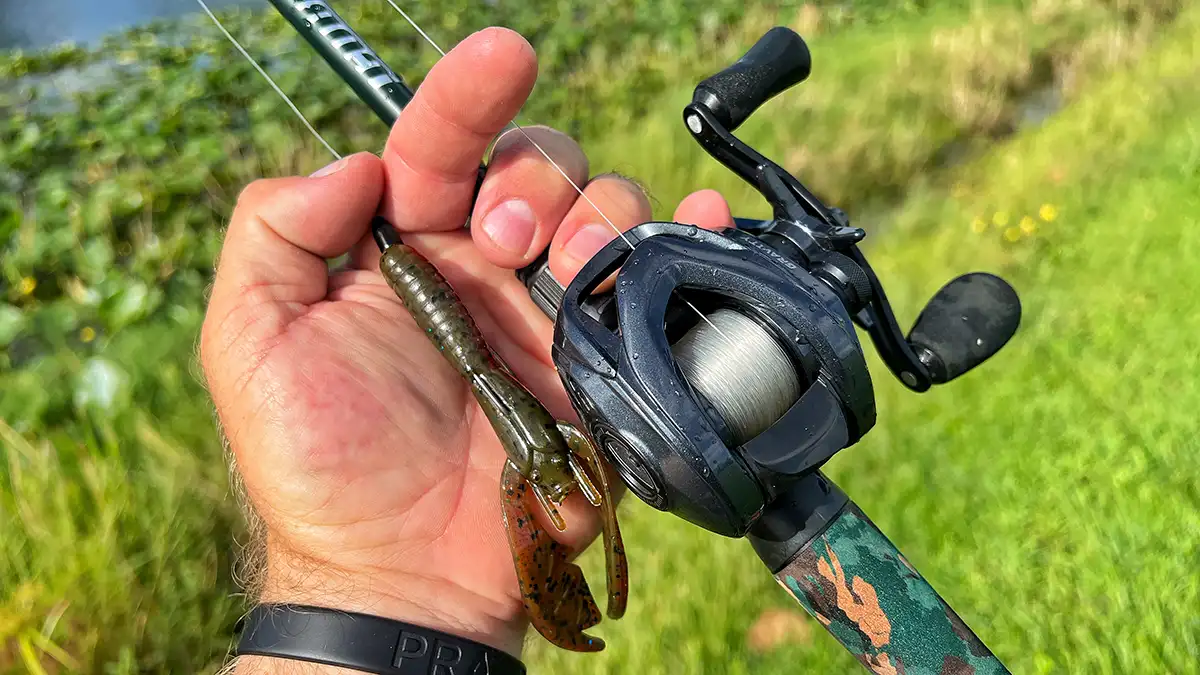
BAITCAST REEL
Baitcast reels are the most popular for avid bass anglers. These reels offer great versatility when it comes to line size and application, with even an emerging market for BFS (bait finesse systems), which use baitcast reels specifically designed for light tackle.
These are also great reels for inshore fishing, as they are strong and work well with braided lines. Baitcast reels can be cast in a similar way to spincast reels, by pressing the line release button on the bottom of the reel. However, once you press this thumb bar, you’ll then need to put your thumb on the spool to apply tension. When casting, you’ll lift your thumb off the spool slightly, prepared to stop it again when the bait hits the water.
This can be a difficult thing to master for a novice angler. With a little practice and a lot of patience, it’s certainly doable. Graduating to a baitcasting reel opens a wide range of different tactics that require heavier gear than spincast and spinning reels can accommodate, like flipping, frogging, football jigs, swim jigs, larger spinnerbaits, and more.
These reels also have more adjustments, with a drag system as well as a spool tension knob and braking system. The drag is used to control the amount of force needed to start the spool spinning while the reel is engaged. The spool tension knob determines how much force is needed to start the spool spinning when the thumb bar is pressed and the reel is disengaged. Finally, the braking system helps slow the spool at the end of the cast, to avoid disastrous backlashes.
The size of a baitcasting reel is chosen based on the target species to ensure that it can handle the specific requirements of line capacity and power. For example, catfishing reels are often much larger in size than the ones used for bass.
Great brands like Shimano, Daiwa, Lew’s, Abu Garcia, Ark, Seviin and more offer great baitcasters at a myriad of price ranges.
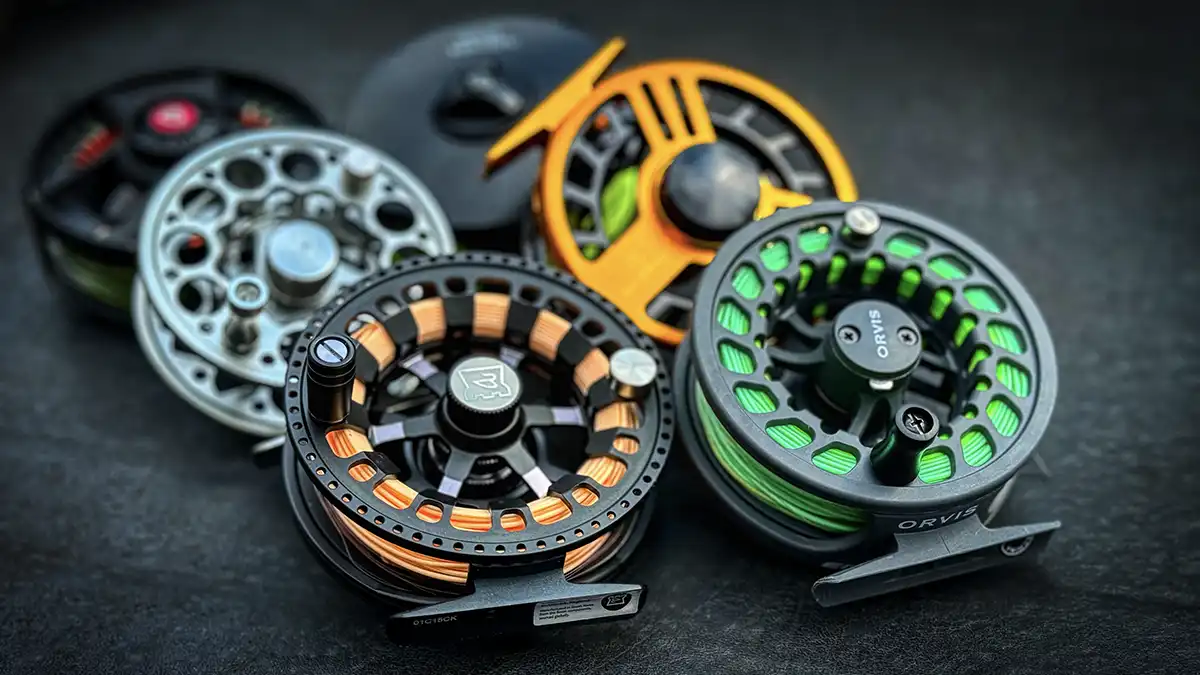
FLY FISHING REEL
Fly fishing reels are the most technique-specific of all fishing reels. Whether fly fishing in a stream for trout, a pond for bass, or inshore for a variety of saltwater species, the baits used with fly fishing reels are relatively small.
To account for the lightweight baits, fly reels use large, heavy (often nylon) main lines paired with light diameter leader lines. Using a fly reel with a long fly rod, an angler is able to make repetitive sweeping motions overhead to slowly let out more and more line and eventually lay his bait gently in front of his prey.
The added ability to make a very gentle presentation is very important in fly fishing, as the fish are often in ultra clear water where they are easily spooked and highly skeptical of any lure offered to them.
Due to the large diameter of the fly line, the spools of fly reels are very large as well. There’s a spool release and handle on the side and they are mounted beneath the rod like spinning reels. These reels are ideal for specific uses by specialized anglers, and not for the novice looking for a versatile reel as a beginner.
Great brands like Hardy, Greys, Sage, Cheeky, Orvis, Lamson, Redington and more offer high end to budget friendly options for fly anglers of all skillsets.
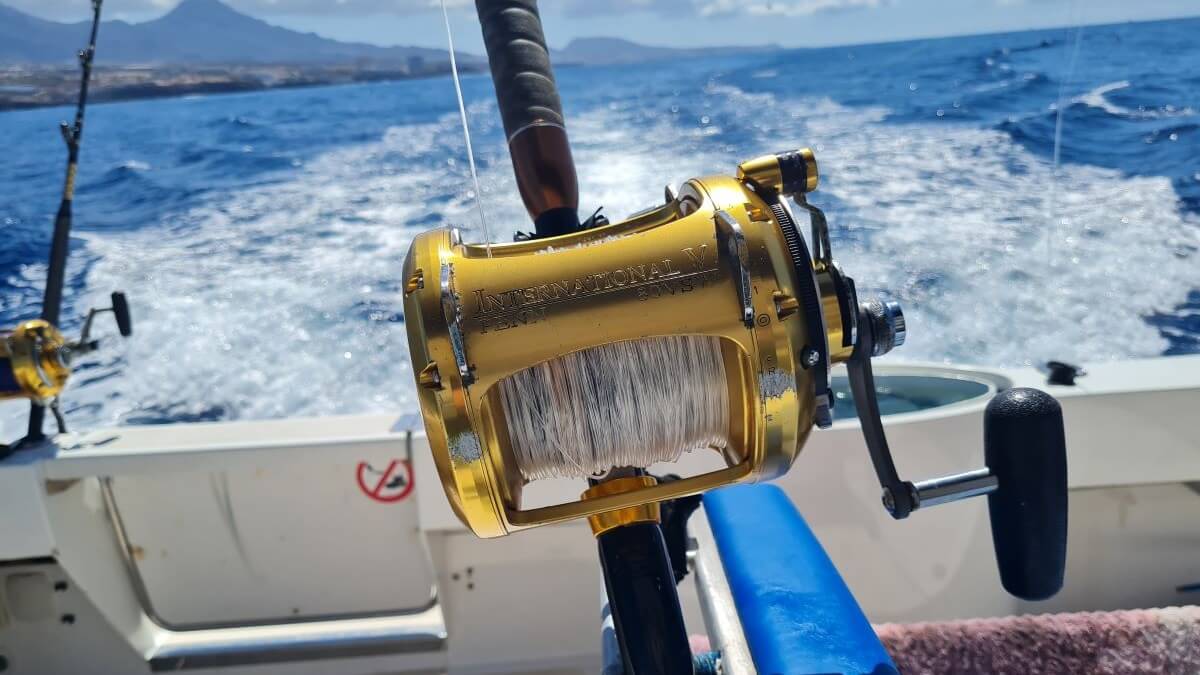
SALTWATER CONVENTIONAL REEL
Saltwater conventional reels, or overhead reels, are used primarily for big game fishing in both saltwater and freshwater. These are the strongest of all reel types, capable of handling fish like tuna that weigh in the hundreds of pounds. Take a reel like the Penn International conventional Lever Wind reel and you will see the Cadillac of saltwater reels able to withstand the fight of 1,000 pound fish.
Though these reels look somewhat like baitcast reels, the mechanisms are different and they all have much larger spools to accommodate larger line diameters. More line is often required for the techniques these reels are used for so the larger spools are necessary for line capacity purposes.
Among the finer differences between these reels and others are the spool tension adjuster, the gear speed selector, and the level drag. Due to their size, these reels are often cumbersome and hard to transport. They are not suitable for beginners who are looking for a reel to cast lures with. As prices go, these are also the most expensive on average, especially those made to withstand the taxing requirements of saltwater fishing.












